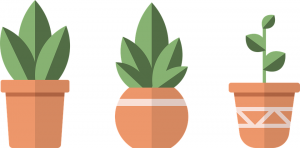“Fall in love with your users” – Paul-Jervis Heath
When Paul-Jervis Heath told the story of how pot plants improved occupancy rates at the Cambridge University libraries, the non-Brits at last week’s Library Assessment Conference were a bit confused. We would describe these as “potted plants.” We all laughed, then Heath went on with his story: In testing various seating arrangements in the library’s reading room, the design team learned that plants placed in the center of each table provided a psychological sense of privacy, and students were more likely to sit across from one another while studying when plants were used as dividers. The designers learned that occupancy was less dependent on the number of seats in the space than how those seats were configured in relation to one another.
Small round tables created personal “bubbles” and resulted in one person sitting alone at a four-top, leaving 3 seats empty. Low-backed couches arranged like train cars left patrons feeling as if someone might be watching them from behind, or reading over their shoulder. This seating type also reduced occupancy. These findings were discovered as part of the prototyping process. The designers experimented with “cheap” Ikea furniture that allowed for iteration and experimentation – prior to investments in permanent furnishings.
Heath is the founding principal of Modern Human , a UK design and innovation consultancy. His work with all kinds of clients provided a refreshing perspective on service and space strategy for the 600 librarians attending the conference last week in Houston. His presentation related to the use of ethnographic methods in design towards prototyping services and spaces in libraries.
Design ethnography is a tool that many of us use in our assessment practice. Its roots are in anthropology and Nancy Fried Foster, then at the University of Rochester, popularized its approach in the now classic Studying Students. Observation, diaries, journey maps, design charrettes – the methods strive to understand users not by asking them what they want, or studying historical data – but by watching, and observing the kinds of barriers and frustrations users experience as they do their work. The approach can be used to understand how users search for an item in the library catalog, schedule a study room, or interact with a service professional. The idea is that by watching people, by observing in unobtrusive ways, we learn what motivates people, what’s important to them and what they value.
Heath emphasizes the power of iterative design and prototyping. It’s important to “Keep everything you design as an experiment.” – not getting too attached to a single solution before you’ve tested it with users. As much research in assessment shows, librarians and other information professionals may have quite different mental models of the information universe than our users. Heath provided us with powerful examples of resolving this challenge.
Next post, Jackie Sipes (User Experience Librarian) will share her takeaways from the conference!
Enjoy,
https://speakerdeck.com/pauljervisheath/unlocking-the-power-of-design-in-libraries

